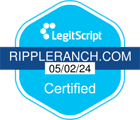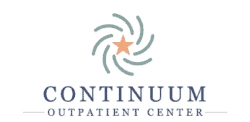Thought Disorder - Symptoms, Diagnosis, And Treatment
What is a thought disorder? Read on to learn more about thought disorders, common types of thought disorders, and available treatment options.
What Is a Thought Disorder?
A mental illness known as a thought disorder affects a person’s beliefs, thoughts, or perceptions. Thought disorders impact how a person organizes their thoughts into logical sequences. Numerous factors cause thought disorders. Paranoia, hallucinations, and other symptoms of thought disorders can influence a person’s behavior.
Thought disorders are signs of various mental illnesses, including schizoaffective disorder and schizophrenia. Typically, this disorder is identified when a person’s behavior or speech shows complex, absurd, or confused thought patterns. Some people are predisposed to developing a thought disorder due to their genetic makeup and environmental circumstances.1

Table of Contents
Learn More About Ripple Ranch Recovery Center
Our team is standing by to discuss your situation and options. Your call is fully confidential, and no obligation is required
What is Formal Thought Disorder?
A thought structure or form disruption is known as a formal thought disorder (FTD). The thought process structure is divided into parts. The formal thought disorder disrupts the thought process structure in between. Disorganized speech is among signs of a thought disorder, and it’s a major characteristic of schizophrenia and other psychoses. FTD is also associated with conditions including neurological disease and mood disorders.
Symptoms of Thought Disorder?
While issues with thought and language are indicators of thought disorders, a diagnosis cannot be made based on these symptoms. These symptoms can momentarily manifest in overly worried or exhausted persons. Depending on their frequency, intensity, and the impairment they cause, these symptoms may be indicators of a thought disorder.
Symptoms of a thought disorder include:
- An inability to stay on topic
- Lack of speech
- Rapid, pressured speech
- Incoherence
- Illogical speech
- Wandering train of thought
Thought Disorder Diagnosis
To diagnose a thought disorder, a medical expert will examine a person’s level of intelligence, culture, and education to assess whether they are acting inconsistently. Clinicians use the following tests to identify thought disorders:
The Rorschach Inkblot Test
Research can trace the application of the Rorschach inkblot test in assessing thought disorders back to Hermann Rorschach. The test looks for probable thought disorders using a sequence of 10 inkblots. The individuals explain how they each perceive the ambiguous inkblots.2
The administering psychologist then analyzes the person’s comments to look for any probable thinking disorders. Given that Rorschach is projective, it offers an insight into how a person sees, understands, and reacts to ambiguous stimuli.
The Thought Disorder Index (TDI)
A health practitioner converses with the individual during this examination; the dialogue is recorded and afterward transcribed. The Thought Disorder Index (TDI) offers a method for recognizing, classifying, and assessing the degree of disordered thought processes communicated through language. Care providers Use the TDI to analyze 23 areas that can suggest a thinking disorder. TDI assesses 23 potential thinking disruption areas and rates each one’s severity from zero to one.2
Scale for the Assessment of Thought, Language, and Communication (TLC)
The Scale for the Assessment of Thought, Language, and Communication (TLC) is possibly the most often used clinician-rated TD assessment in clinical treatment and research. It entails making observations and grading their intensity using definitions of various thought disorders.
Common Types of Thought Disorder
Thought disorders aren’t officially recognized until they impair communication. There are different types of thought disorders. The symptoms of each form of thought disorder vary. Some of the most common types of thought disorders will be detailed below.
Alogia
Alogia is frequently observed in individuals who have dementia or schizophrenia. People who have alogia, commonly referred to as poverty of speech, respond to inquiries in a short and basic manner. Unless prompted, those suffering from this thinking disorder rarely speak.
Blocking
Thought blocking is a symptom of schizophrenia. People with a blocking thought process stop speaking in the middle of sentences and pause for a period. They frequently switch the subject of discussion when they begin speaking again.
Circumstantial Thinking
Circumstantiality, often referred to as circumstantial speech, is the tendency for a person to speak or write with an excessive amount of irrelevant information. This kind of disorganized thinking entails adding a great deal of needless detail. The individuals stick to their initial line of reasoning but add irrelevant information before getting to their main point.
Clanging
A common sign of mania is a clanging thought disorder. A person with a clanging thought disorder chooses words based more on sound than meaning. The individual could depend heavily on rhymes, alliterations, or puns to construct illogical phrases.
Echolalia
This entails individuals quoting other speakers’ words back to them. People who have echolalia have trouble communicating. Instead of expressing their views, they frequently repeat sounds and words they hear. They might ask the same question again rather than respond.
Neologism
People suffering from neologism disordered thought processes make up words on the spot. When speaking, a person who struggles with neologism frequently invents new words or idioms. These words have no real meaning and are unrecognizable, but they are nonetheless used in speech.
Tangentiality
Tangentiality describes a thought disorder that leads someone to talk in exaggerated or pointless detail. Individuals suffering from tangentiality frequently talk about topics unrelated to the primary topic of conversation. Although most people occasionally engage in tangential behavior, persistent and excessive tangential behavior may point to a mental health disorder, notably schizophrenia.
Word Salad
Word salad, often known as incoherence, refers to the disorganized arrangement of words or phrases that is frequently incomprehensible. This disordered thought process interferes with word choice and semantics, making it difficult to produce coherent speech.
Risk Factors of Thought Disorder
The following are risk factors that increase an individual’s chance of developing a thought disorder:
Mood Disorders
Mood disorder is a persistent internal emotional state that affects almost every aspect of a person’s conduct in the outside world. People with mood disorders experience extremes of happiness and despair, feel depressed all the time, and lose interest in significant aspects of life. Mood disorders can increase a person’s risk for thought disorders.
Bipolar Disorder
One of the most prevalent types of mood disorders is bipolar disorder. Bipolar disorder, formerly known as manic depression, involves extreme fluctuations in mood, energy, activity level, and focus are symptoms of. The bipolar disorder impairs one’s capacity to perform daily activities.
Depression
Depression is a mood disorder characterized by a lingering sense of sadness and loss of interest that can interfere with daily tasks. People suffering from depression have a high chance of developing thought disorders.
Traumatic Brain Injury
The most common cause of traumatic brain damage is a severe blow or jolt to the head or body. Traumatic brain injury can also result from an object passing through brain tissue, such as a gunshot or fractured piece of the skull. The brain cells may be momentarily affected by a mild traumatic brain injury, blocking thought process, and causing thought disorder.
Anxiety
Anxiety disorders are characterized by intense sensations of worry, anxiety, or fear that might interfere with daily activities. A strong nervousness can cause individuals to have difficulties stringing thoughts together and forming a coherent sentence. Anxiety and thought disorder are symptoms of several mental illnesses.3

Treatment of Thought Disorder at Ripple Ranch Recovery Center
If you or a loved one exhibits thought disorder symptoms, seek medical attention at ripple ranch recovery center. Ripple ranch recovery center uses evidence-based treatment methods such as cognitive behavioral therapy (CBT) to treat thought disorders. Scientific research and several decades of statistics support ripple ranch treatment techniques.
The methods are proven to be effective in helping people overcome thought disorders and find long-term success in recovery. The recovery team creates a special care plan to fit your needs in recovery using evidence-based therapy techniques and an underlying holistic approach. Treatment for thought disorders:
Psychotherapy
The process of treating psychological illnesses and mental suffering with the help of verbal and psychological approaches is known as psychotherapy. This involves a qualified psychotherapist assisting an individual in addressing issues like a specific mental illness or a stressor in their lives.
Creating a therapeutic relationship, dialoguing, and trying to change unhelpful thoughts or behaviors are components of nearly all forms of psychotherapy. Depending on the therapist’s treatment approach for thought disorders, various tactics and strategies can be used. Depending on the person’s symptoms, healthcare providers may use the following therapy to treat disorders of stream of thought:
- Cognitive-Behavioral Therapy: Recent research has proven that talk therapy can also treat thought disorders. Cognitive behavioral therapy (CBT) enables individuals to identify and alter problematic thoughts, emotions, and behavior patterns. Ripple ranch recovery center uses CBT to help people with thought disorders control their symptoms and enhance their functioning.4
- Family Therapy: Recovery centers developed family-based therapy to enable relatives to play an active role in their loved one’s recovery from thought disorders. This talk therapy educates the families on what they can do to support their loved one with a thought disorder.
- Group Therapy: Recovery from thought disorder can be greatly aided by peer support. Recovery centers organize group therapies to encourage individuals during their recovery journey. Regularly attending a support group offers the chance to interact with those who experience similar difficulties.
Medications
Antipsychotic medications can aid in managing some thought disorder symptoms. Depending on the underlying cause of the thought disorder, clinicians may recommend an antipsychotic medication. Antipsychotic drugs can balance dopamine and serotonin levels in the brain. Typically, the drugs are taken daily over extended periods.





